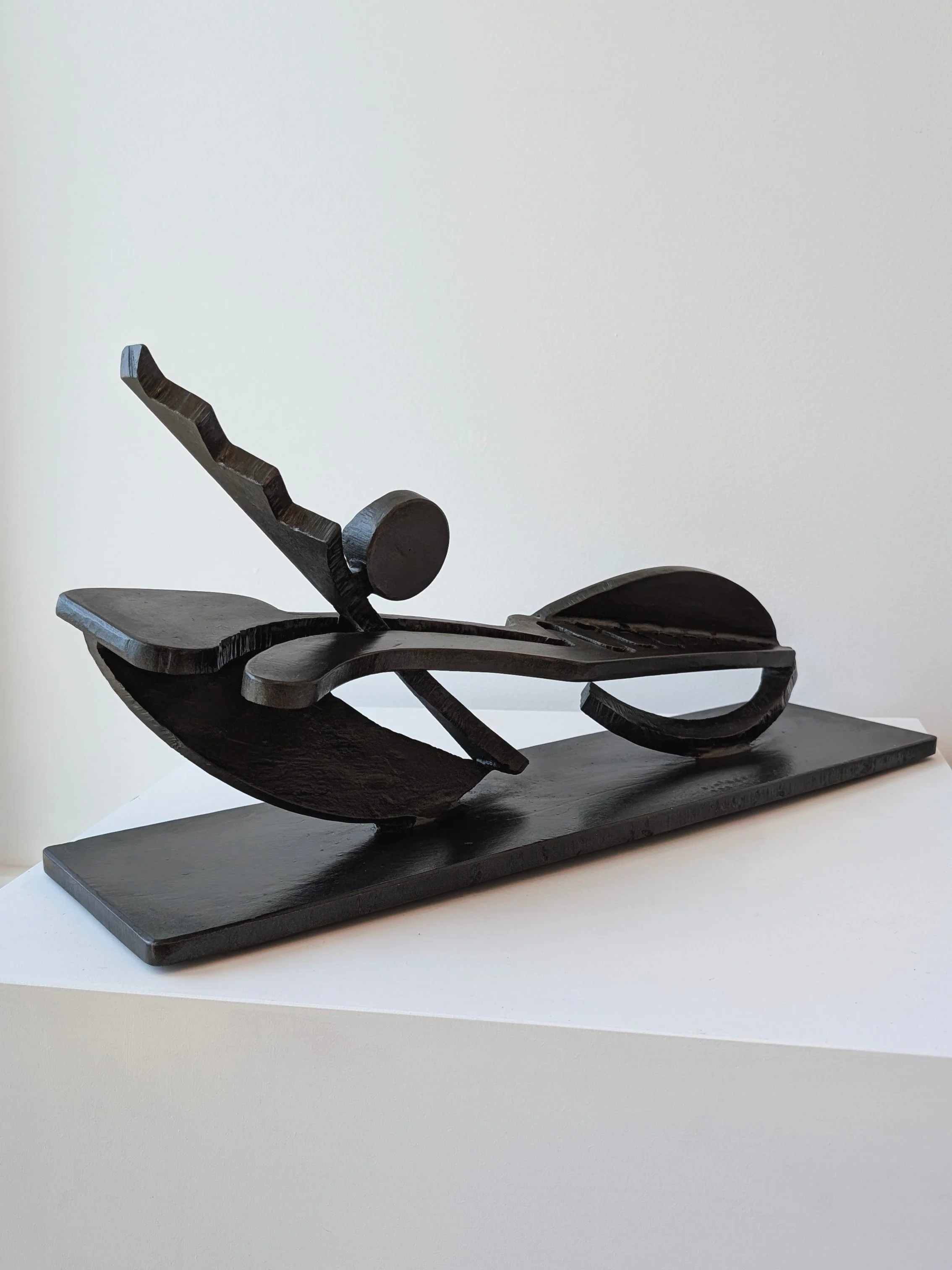BEN MCLEOD
Ben McLeod is an acclaimed Canadian sculptor and multi-disciplinary artist whose practice spans over five decades, marked by a profoundly self-propelled trajectory and the cultivation of a unique visual language. His comprehensive artistic output encompasses monumental sculpture, drawing, and painting. Born in Aberdeen, Scotland, in 1948, McLeod was raised in Vancouver, where his artistic development began in the 1970s. His commitment to craft was rigorously honed through engagement with institutions including ACAD (now Alberta University of the Arts) and collaborations with artist Katie Ohe, demonstrating his precision and mastery of industrial materials. A pivotal moment arose from an early stone carving, which, upon its acquisition by a family member, was exchanged for a book on Henry Moore. This unexpected gift ignited a lifelong interest in the practice and mediums of sculpture, profoundly altering his artistic trajectory.
McLeod’s work consistently probes themes of resilience, the passage of time, and the dialogue between structure and movement. His sculptures, while abstract, often evoke forms—figures, animals, or machinery—through the viewer’s perception of balance and arrangement, akin to Gestalt principles. These forms, which emerge from the mere placement of elements, like a face from a few drilled holes or the subtle outline of a figure, are frequently poised in tension or suggest captured motion. Designed for 360-degree viewing, each sculpture dynamically shifts and reconfigures from every angle, even from below, offering profound insight into McLeod’s unique spatial cognition and his interpretation of the world. This highly developed three-dimensional vision is equally evident in his extensive drawing practice, an essential element that fills sketchbooks with explorations and potential configurations. His process is one of relentless iteration, characterized by revisiting, refining, and overhauling concepts over many years. Minute adjustments can suddenly imbue a sculpture with palpable vitality, echoing the dynamic spatial presence of David Smith’s constructions or the raw architectural interventions of Gordon Matta-Clark, who revealed the fundamental truths of structures through stark honesty and unrefined materiality.
McLeod’s primary sculptural medium is metal, predominantly steel, which he sources from scrap yards across rural Alberta, including those near his base in Cochrane. He transforms heavy-duty industrial and farming components into commanding brutalist sculptures. His aesthetic draws heavily on principles of raw honesty—jagged edges, textured oxidized surfaces, and industrial remnants—yet always with a masterful sense of inherent harmony. Like David Smith’s welded steel compositions, McLeod’s works celebrate the material’s history and imperfections, forging complex forms that embody immense strength and delicate balance. He finishes these metal works, at times applying metal paint or burnishing with oxides, or allowing them to naturally oxidize, embracing the material’s inherent ruggedness.
Beyond steel, McLeod’s repertoire extends to fluid, sensual forms carved from stone and wood. He excavates the material’s underlying essence, allowing it to guide the finished work. His carved stone sculptures—fluid, organic, and sensual—resonate with Henry Moore's timeless forms, reimagined through a contemporary, materially honest lens.
Currently based on an acreage in the Alberta foothills with commanding views of the Rocky Mountains, McLeod’s land transcends being merely a studio; it becomes both crucible and muse. Here, monumental sculptures, some weighing over a tonne and moved by bulldozer, are organically integrated into the landscape, fostering a poetic dialogue between nature and industry. This expansive, isolated setting cultivates the unhurried solitude crucial to his deep resolution of each work, which, as he describes, "speaks to him," guiding its completion. His acute sensitivity allows him to discern this culmination, recognizing instantly when an element is missing, even if its resolution unfolds over extended periods of rumination.
McLeod’s outsider stance—largely self-guided and deeply intuitive—frees him to forge a profoundly personal visual language. His relationship with his diverse materials is rooted in philosophical honesty and an acute responsiveness to their inherent qualities. His sculptures are the culmination of patience, precision, and an intuitive dialogue with the materials themselves, nourished by the expansive landscapes that define his existence.
McLeod's significant contributions to contemporary sculpture are reflected in his inclusion in numerous permanent collections, including the Alberta Arts Foundation, the Canada Council Art Bank, the Nicoll Art Museum (University of Calgary), the University of Lethbridge Art Collection, the Coutts Centre for Western Heritage, the City of Calgary, and numerous notable private collections.
His work stands as a testament to patience, precision, and acute responsiveness to material. This inaugural exhibition in Vancouver, his childhood home, marks a singular opportunity to experience the profound, intuitive sculptures of this pioneering Canadian artist.


































